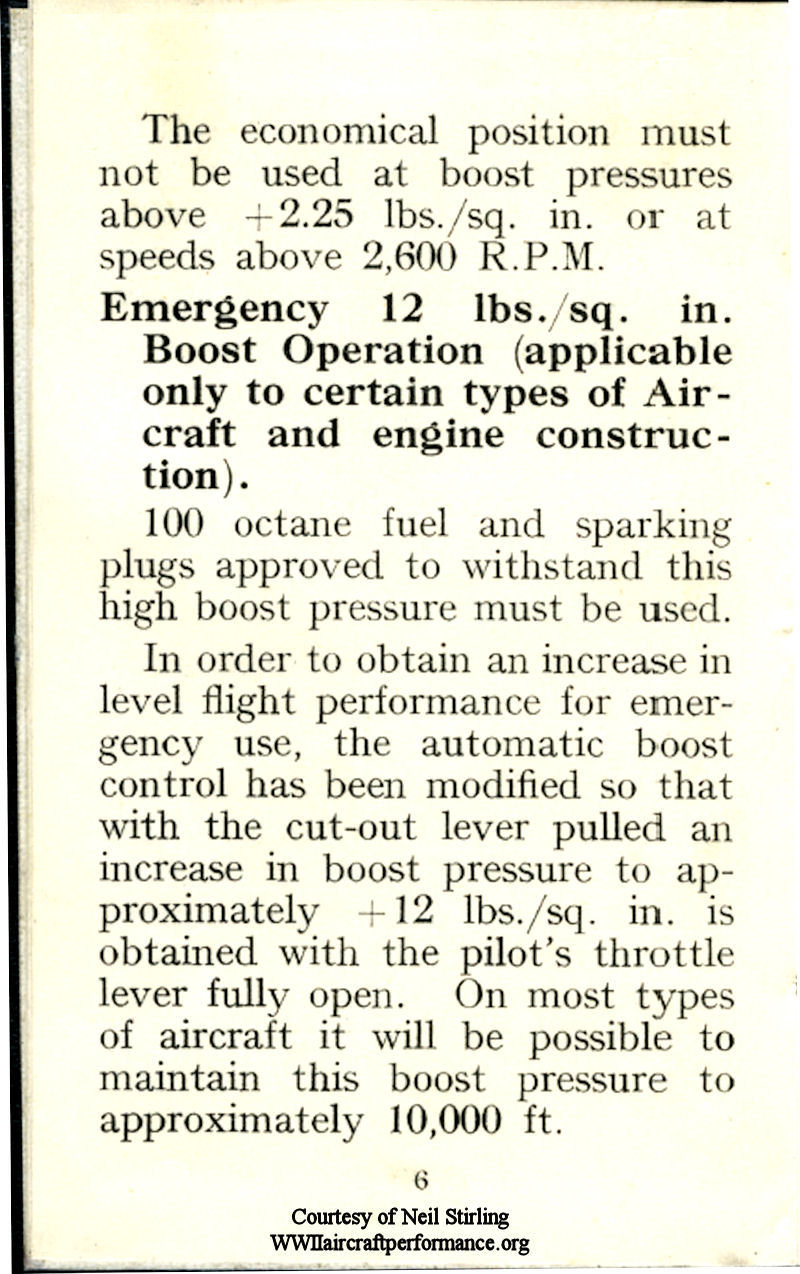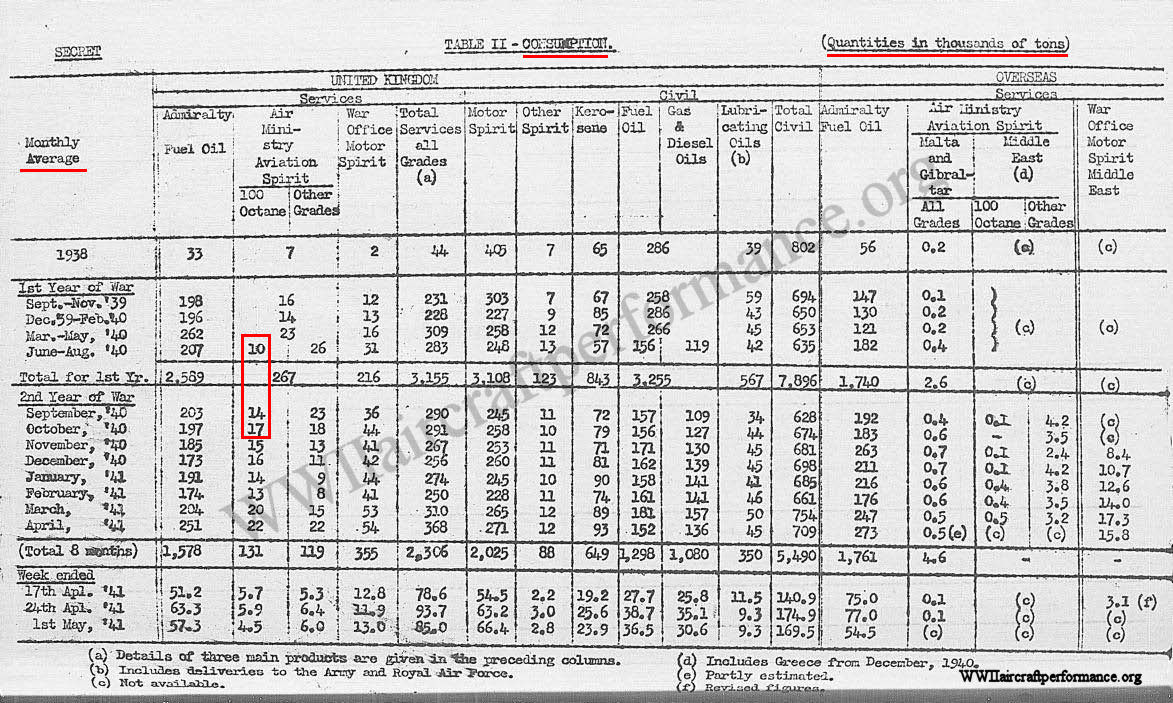
 |
|
#991
|
|||
|
|||
|
Quote:
Emergency +12 lbs./sq. in. Boost Operation: Pilot's Notes, Merlin II, III and IV, 4th Edition, April 1940, page 6. 
|
|
#992
|
|||
|
|||
|
As said, there is no fixed boost value specified. The possible boost value had to be determined individually before the take-off. I will dig out the pages ASAP.
Quote:
http://forum.1cpublishing.eu/attachm...1&d=1332111649 http://forum.1cpublishing.eu/attachm...3&d=1332111666 Well, as long as you are not doing a "long period take-off" ... Last edited by 41Sqn_Banks; 04-17-2012 at 12:37 PM. |
|
#993
|
|||
|
|||
|
I am sorry to jump into this discussion (I would prefer to burn in my burning Bf109 with a properly exploding central fuel tank than post in this thread, LOL) but I there is something that raised my curiocity:
I am looking at the numbers for the first year of war (Sep.'39 - Aug.'40) Did anybody notice that the line Total for first year numbers make no sense?  Just wonder what the reason may be for this discrepancy. ~S~ |
|
#994
|
|||
|
|||
|
Quote:
For the 1st Year of War Sept.-Nov.'39, 16 is given as the monthly average, in thousands of tons, for that 3 months period. With that understanding (16x3) + (14x3) + (23x3) + (10x3) + (26x3) = 267 
|
|
#995
|
|||
|
|||
|
Quote:
Did 245 still use 100 fuel after it went to Aldergrove in July 1940? |
|
#996
|
|||
|
|||
|
Quote:
|
|
#997
|
||||
|
||||
|
Quote:
Once again, where is in any significant quantity of the fuel at the airfields in March 1940? Answer is there is no fuel in any significant quantity. Your own documentation shows that. Problem is you gamers are so bent on finding what you need that you do not see any other outcome. Once again, if 100 Octane fuel is not listed as the primary Operating Instructions even in June 1940. Quote:
If the later version of the Operating Instructions does not include it, you can bet the earlier did not. That looks like somebodies photo-shop work. |
|
#998
|
||||
|
||||
|
Quote:
Total is just that...TOTAL for the year. In 1938 they had 100 Octane in quantity?? No they did not. I don't think it has anything to do with the columns above it. Can you prove it does not? |
|
#999
|
||||
|
||||
|
Quote:
Even in June 1940, 100 Octane has not eclipsed 87 Octane as the predominate fuel. The Pilots Operating Instructions would have published with the latest data. This is reflected in Table II as no significant quantities of 100 Octane exist at the airfields. If the technical instructions were published in March then that gives them 4 months until the update is published. The Operating Notes still list 6 1/2lbs as the 5 minute all out emergency setting for the engine as the most common configuration. The limiting operational conditions does not make any mention at all of 100 Octane. Quote:
The RAF official history takes the battle out to the end of October 1940 when German Daylight raids ceased. Other histories end the battle in December 1940: Quote:
The German's end the battle in May 1941 when their bombers where transferred to the east and offensive operations against England were called off. |
|
#1000
|
||||
|
||||
|
Pilots Operating Limitations, June 1940:
 All out 5 minute Emergency rating as listed in June 1940:  If by June 1940, 30 squadrons were operating 100 Octane, then almost the entire force would need the +12lbs boost instructions instead of the 87 Octane. The Operating Notes would have reflected this and the 100 Octane limits would have been included. That is a fact and how it works. |
 |
|
|